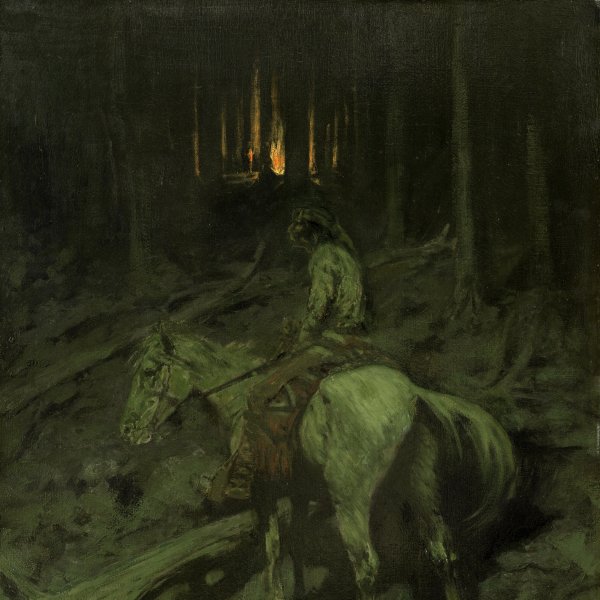Frederic Remington
Canton, 1861-Ridgefield, 1909
Son of a newspaper editor, the American painter Frederic Remington studied at the Yale University School of Fine Arts. However, his interest in the American Wild West spurred him to drop out of art school following his father’s death in 1880.
In 1882 Remington made the first of a long series of trips to the West, failing to find what he had been so badly hoping for. Instead of the wild landscape he had dreamed of, Montana was a place in the process of civilisation where the Indians were beginning to live in reserves. As a result Remington decided to devote himself to depicting that which he had yearned to find since boyhood. His creations were based on reality, but tinged with a dose of fantasy in keeping with his own expectations and those of many of his contemporaries, and contributed to turning the Wild West into a myth.
On returning from his first trip, Remington married and lived for a short time in Kansas, settling permanently in New York in 1885. There he achieved great prestige as an illustrator for the magazines Harper’s, Scribner’s and Outing. The public gradually came to identify his life with his paintings and illustrations, creating a myth around him that he made no effort to refute. At the beginning of the 1890s he visited Africa and Europe. In 1896 and 1898 he travelled to Cuba with the American army to illustrate the War of Independence against Spain.
Remington broadened his artistic repertoire in 1885 when he began to experiment with sculpture. In an attempt to be accepted as a fully-fledged painter and not just as an illustrator, his style became simpler and less anecdotal with the turn of the century. His nocturnal scenes belong to this context. He died in 1909, shortly after a successful major exhibition at Knoedler’s gallery in New York.
In 1882 Remington made the first of a long series of trips to the West, failing to find what he had been so badly hoping for. Instead of the wild landscape he had dreamed of, Montana was a place in the process of civilisation where the Indians were beginning to live in reserves. As a result Remington decided to devote himself to depicting that which he had yearned to find since boyhood. His creations were based on reality, but tinged with a dose of fantasy in keeping with his own expectations and those of many of his contemporaries, and contributed to turning the Wild West into a myth.
On returning from his first trip, Remington married and lived for a short time in Kansas, settling permanently in New York in 1885. There he achieved great prestige as an illustrator for the magazines Harper’s, Scribner’s and Outing. The public gradually came to identify his life with his paintings and illustrations, creating a myth around him that he made no effort to refute. At the beginning of the 1890s he visited Africa and Europe. In 1896 and 1898 he travelled to Cuba with the American army to illustrate the War of Independence against Spain.
Remington broadened his artistic repertoire in 1885 when he began to experiment with sculpture. In an attempt to be accepted as a fully-fledged painter and not just as an illustrator, his style became simpler and less anecdotal with the turn of the century. His nocturnal scenes belong to this context. He died in 1909, shortly after a successful major exhibition at Knoedler’s gallery in New York.





